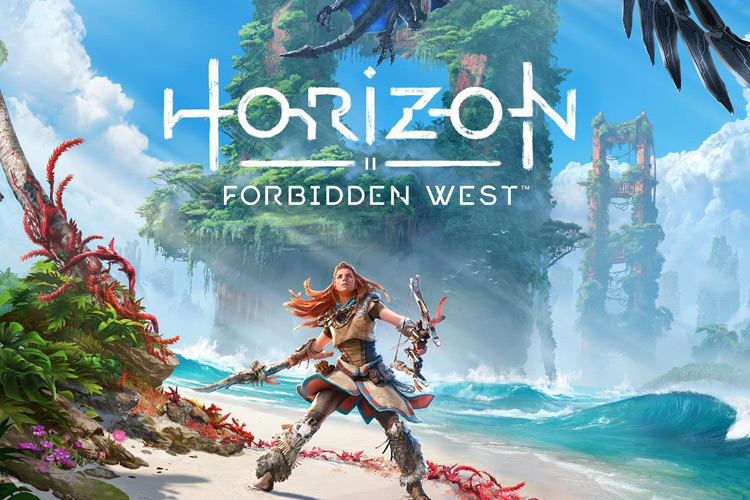Since beginning life almost twenty years ago, Guerilla Games has been responsible for some of PlayStation’s biggest titles. Although it all began with Shellshock: Nam ’67 — a game I remember renting, beating and enjoying despite it being pretty rough — it was the PlayStation 2 exclusive, Killzone, that really put the Amsterdam-based studio on the map. In fact, that release spawned one of Sony’s more notable and popular series, which hasn’t been heard of since the dawn of the last console generation.
After launching Killzone: Shadow Fall alongside the PlayStation 4, Guerilla switched its collective focus to a new idea. The result was a game unlike many others, wherein a rustic and primal warrior used bows, arrows, ropes, traps and wits to do battle against animal-esque machines. That PlayStation 4 exclusive, which later released onto PC, went on to sell over 20 million copies.
Five years have passed since the launch of Horizon: Zero Dawn, and most of that time was spent on developing a sequel, which is now available to play. They call it Horizon: Forbidden West, and it’s a beast of a game that anyone with interest should not miss.
Horizon: Forbidden West picks up approximately six months after the end of the first game, and continues the story of Aloy, who cannot rest after defeating HADES and doing everything she could to save the world.
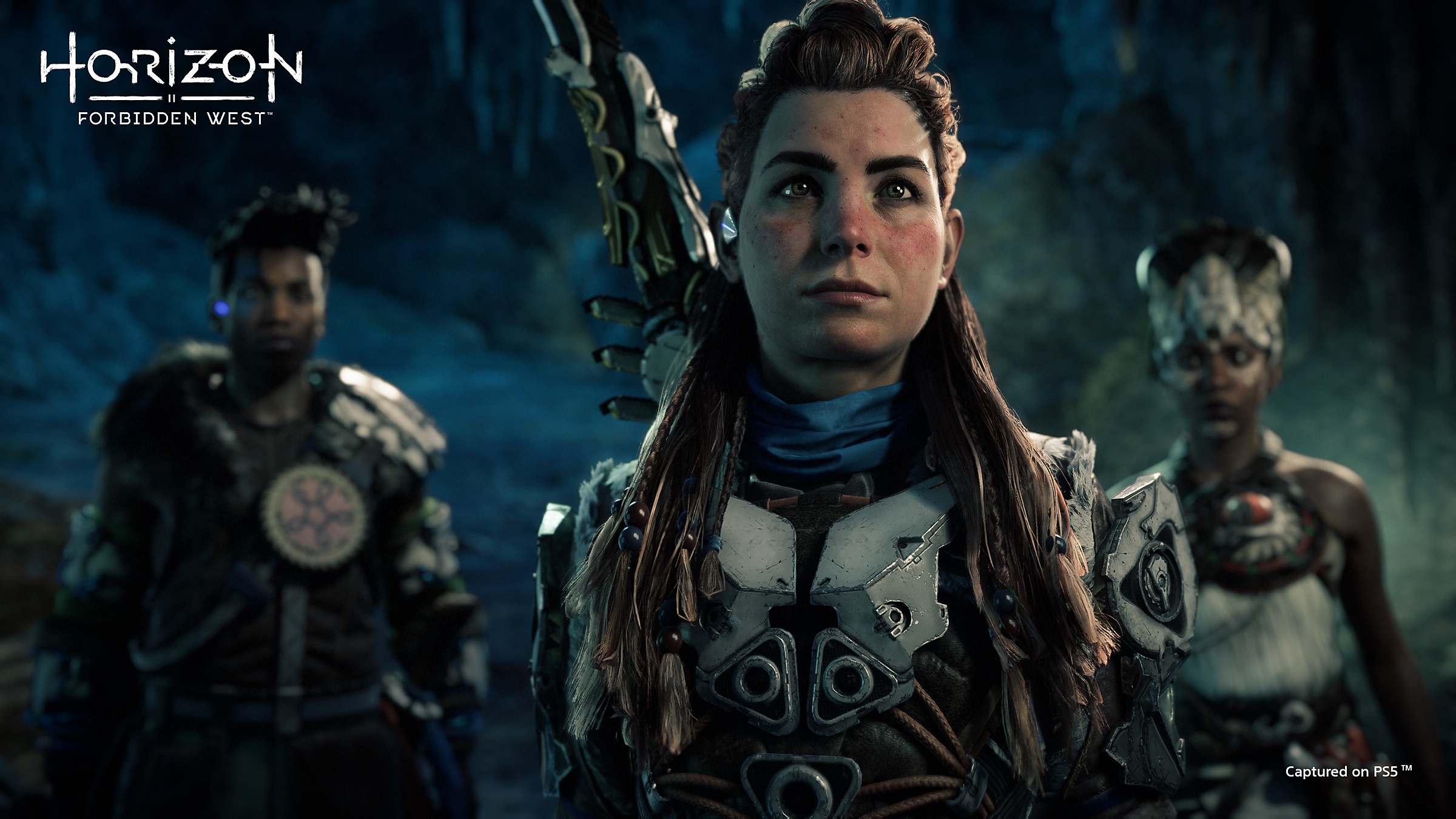
Despite Aloy’s efforts, this futuristic version of planet Earth — in which humanity as we know it has been extinct for thousands of years — is still in trouble. A red tinged plague threatens the land, and something has stirred up the machines, making them more dangerous than ever before. Left to its own devices, this combination could spell disaster for those who remain. Thus, it’s up to Aloy to try to save the world once again.
Things pick up as our heroine attempts to enter another long dormant facility, in search of data. She’s joined by an ally named Varl, who assists as the player is taught the basics. This opening quest is just the beginning of what shapes up as one of the longest games I’ve played in some time. To say that Forbidden West is a monster, and a massive one at that, would be to understate things. This game is gigantic. In fact, after playing for close to 20 hours, 70% of the map remained clouded and unseen.
As of publication, I’ve put around 30 hours into it, and look forward to returning.
After her opening mission, Aloy learns that she was double crossed, and discovers that things didn’t happen exactly as they seemed to have during the first game. This causes her to set out in search of an old friend, and results in her having to venture outside of her homeland. It won’t be easy, though, because the west is forbidden for a reason. The tribes who control it do not take kindly to outsiders, and are only willing to meet and discuss things civilly at certain times. Even then, there’s a lot of tension in the air. If an outsider was to cross over without clearance, he or she would be hunted and potentially killed for trespassing.
This is why the game picks up where it does, in a less tumultuous part of the world. That opening area is similar to what was found in the original game, and contains rivers, lakes, caves, mine(s), fields and numerous cliffs to explore. It’s so big that one could lose hours to both exploration and side quests, which is what honestly happened to me. I got caught up in finding the collectible satellite dishes, completing all side quests and collecting as many materials as I could. This set me back a bit, but wasn’t a bad idea, as it allowed me to level up and unlock things before venturing forth into the unknown.
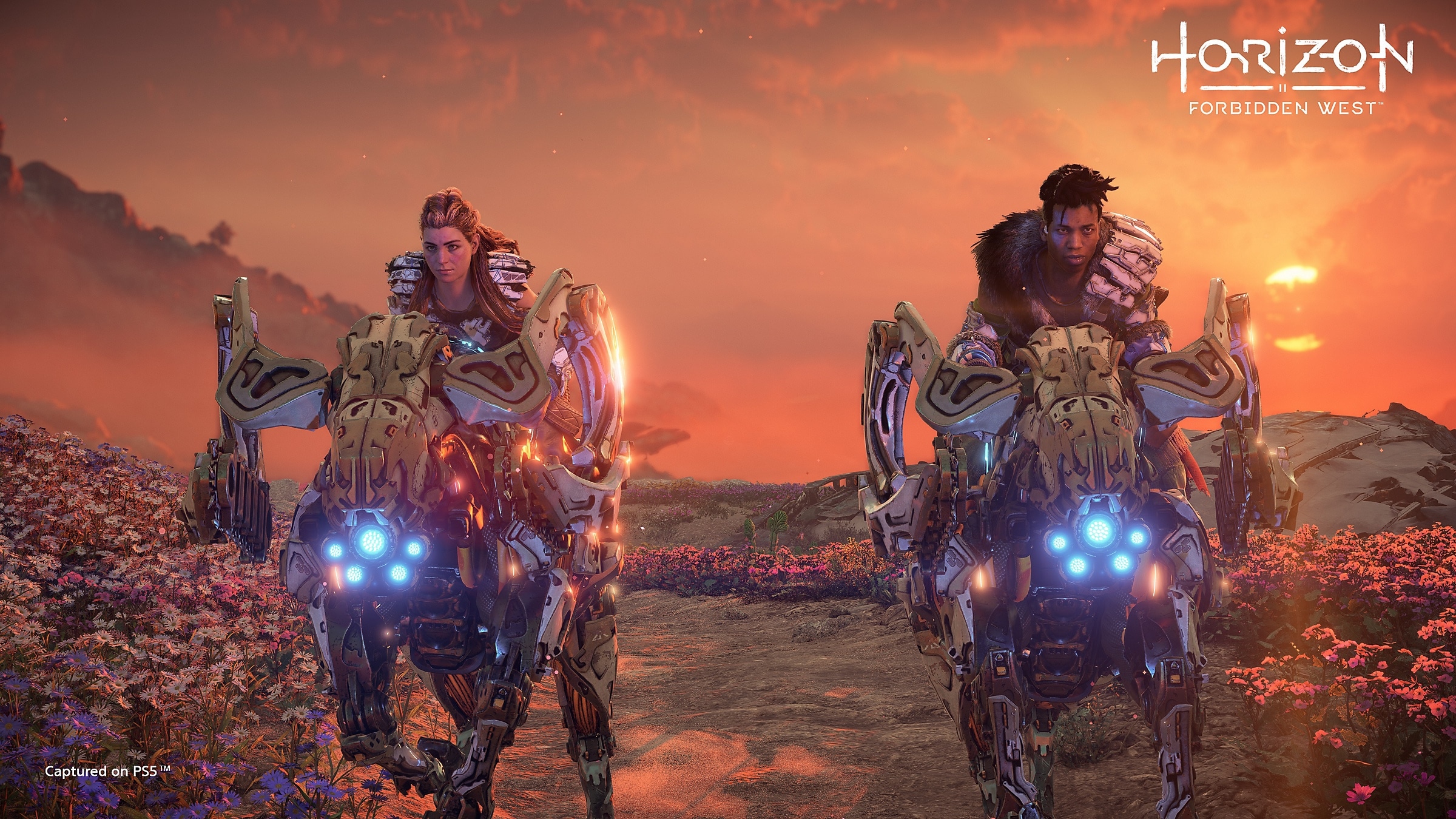
That said, this is the type of game where hours fly by and progress seems slow. If you try to do everything, you’ll be looking at tens upon tens of hours of gameplay, which certainly provides a lot of bang for one’s buck. Focusing on the main storyline alone will still take folks a lot of time, as nothing about Forbidden West is brief. Even the numerous side quests are quite involved.
If you played Zero Dawn, you’ll have a great idea of what to expect from this sequel, as it remains faithful to its predecessor despite building on it in many ways. The core experience remains intact, and it centres upon a quest to save humanity from a dire threat. To achieve this goal, you’ll do battle against many humans and machines, all of which resemble familiar creatures, like deer, birds, snakes, bears, alligators, elephants and hippos. All the while, your goal will be to scavenge parts, upgrade your equipment and gain new abilities.
In fact, Aloy has several different skill trees, which can be upgraded based on player choice and preference. I focused on the survival tree, then unlocked different upgrades from each of the others. Each person will choose what’s best for them, though, and the nice thing is that that’s welcomed here, thanks to trees that all offer interesting skills and helpful upgrades. This includes improved health, better melee combos, machine skills and numerous valour surges, which give the player a boost when activated. The mechanics behind this involve earning valour in combat, then triggering a surge when the gauge is full, or whenever you decide to after filling it.
I’ll be honest and admit that I stuck with one valour surge, because it fit me perfectly. It was the first of two (I believe) in the survivor tree, and allowed me to gain a notable edge in combat, while also benefitting from a constantly replenishing health bar. Needless to say, it was very helpful during intense and challenging battles.
Those who like to collect things will be right at home here, as Horizon: Forbidden West is littered with loot. This begins with environmental items, like rocks (which can be thrown to distract enemies), plants (which are predominantly used to heal, but can be used for other things depending on the type), wood (for arrow crafting) and animals, which can be hunted and skinned for food and inventory upgrades. If you’re like me, you’ll have a hard time bypassing trees or plants without stopping to pick them up, and there are so, so many of them.
Thankfully, Aloy has a stash, which can be accessed at every major outpost, her base of operations and some campsites. With the press of a button, one can replenish his or her inventory with what’s been stored inside.
Every enemy you down drops parts, or has items that can be looted from its human or metallic corpse. However, you will not find weapons when you do this. There are several different types, including different classes of bows and arrows, some of which are tinged with poison, fire, ice or shock, but that’s not all you’ll have at your disposal. You can also purchase and equip traps, spike launchers, bombs, rope shooters, bolt launchers and what they call a shredder gauntlet. The latter seems to shoot different forms of projectiles, but that’s true of many of the game’s weapons.
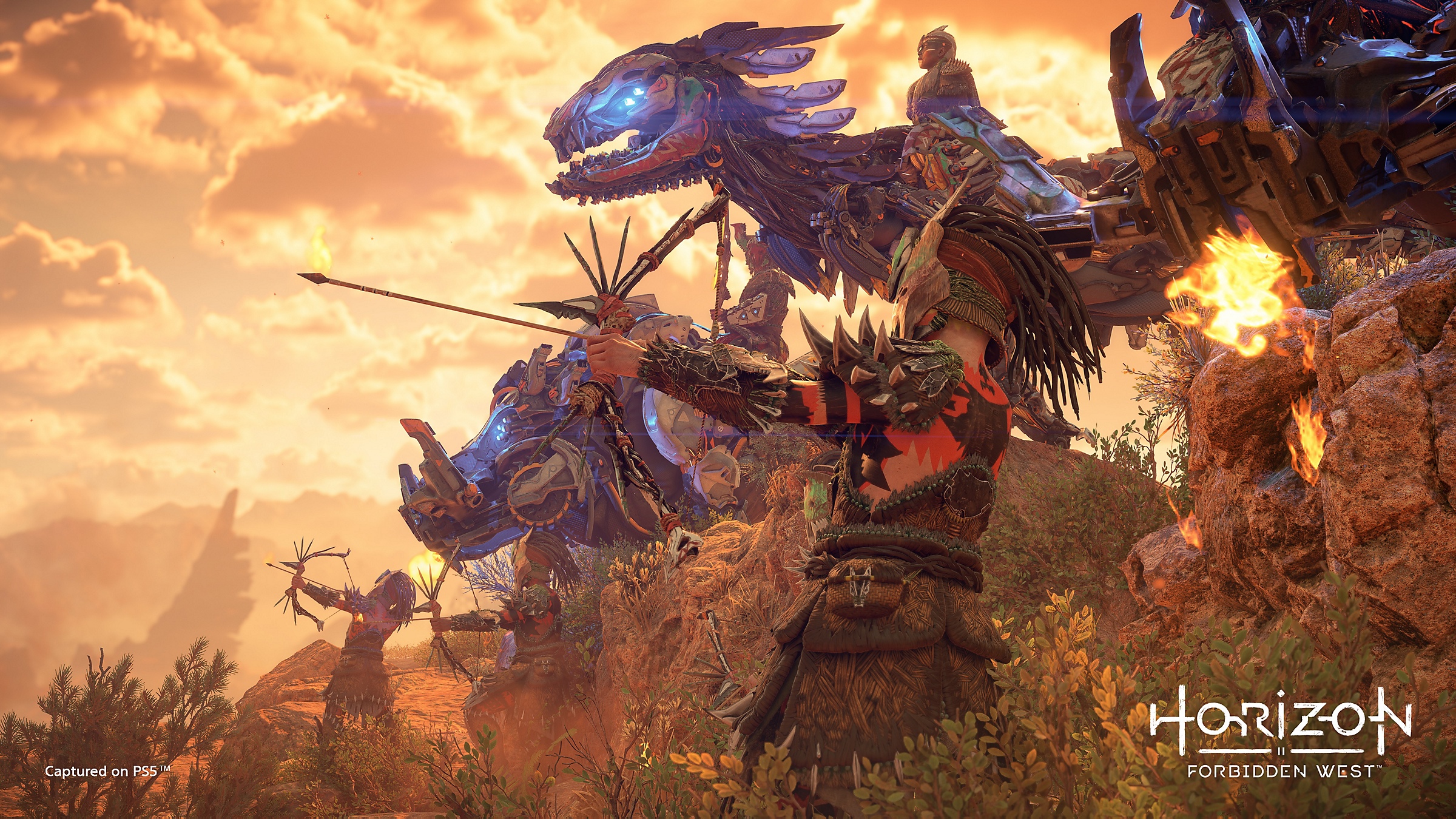
Folks who like to plan, strategize and get very invested within a game’s combat system will enjoy using traps, trip ropes tinged with a chosen element and more. After all, this is a perfect game for experimentation, as one attempts to find the best weapons for their play style. I was admittedly guilty of trying to brute force things a bit too much, by using Aloy’s spear (for light and heavy melee attacks) and a number of different bows. Shooting a specific part of an enemy machine off from a distance away was never unsatisfying
Almost all of the above — the always available spear notwithstanding — must be equipped to Aloy’s weapon wheel. The fact that it only has several spots limits you to a certain number of options, and requires you to think about what’s best for the given section. You’ll always have access to your inventory, though, and can upgrade both weapons and outfits at work benches scattered throughout the environment. More can also be purchased from vendors, of which there are a decent amount.
In addition to these weapons, players will also have different tools at their disposal. The first is a rope-based tool that can be used to pull platforms, open vents, break walls and move chests. Then there’s the shield, which is broken but can still be used as a way to float through the air. Other special items include scuba gear, something that causes a particular flower to explode and a tool that can be used to remove progression blocking vines.
Of course, there’s also Aloy’s focus, which can be used to scan every environment. It’s great for highlighting (and sometimes tracking) enemies, animals, chests, special weapons, loot and crafting materials.
This leads us to something else that must be noted: the fact that Horizon: Forbidden West is not an easy game.
Although it’s definitely not Dark Souls, Forbidden West is far from a walk in the park, even on normal. The enemies are tougher than they were before, and will sometimes take a while to down. Things often become quite hectic, too, as numerous beasts are capable of entering battle when alerted. Thus, the best thing to do is to think before acting. Use stealth to your advantage, and silently kill as many foes as you can. Resources can be limited, and ammunition runs out quickly, so also make sure to scrounge for as many materials as you can.

Even then, you’ll likely run out of things and be forced to improvise. That’s just how this thing is designed.
I won’t spoil anything, but will pique your interest by saying that this campaign also goes places you wouldn’t expect. From its twists to its new environments, it’s got a lot of surprises up its proverbial sleeve. The world alone is incredible, and so very easy to get lost in, but we’ll talk more about that in a bit.
Just go in knowing that things can be convoluted. There’s lots of depth to the characters and their relationships, but the main narrative is a lot to take in and catalogue.
Outside of the main campaign, there’s lots to do within this lengthy single player experience. For starters, the map and compass are littered with question marks indicating interesting areas to search out and explore, be they settlements, enemy outposts, long dormant buildings with things to plunder, or puzzles. Then, there’s the campfires, which you can use to save and fast travel to and from. Don’t get stuck thinking that this is the only way to travel from one distant point to another, though, because fast travel packs (which are generally purchased from traders) allow you to quickly move from one place to the next without having to worry about finding a fire pit.
There are also lots of interesting side quests to complete, many of which are more involved than usual. I found myself getting lost in these optional objectives, and spent a lot of time to trying to complete as many of them as I could. You’ll generally find these in settlements, and will receive them after talking to people who have a green exclamation point above their heads. Other NPCs will offer ‘rumours,’ which give Aloy an idea of places to check out and explore.
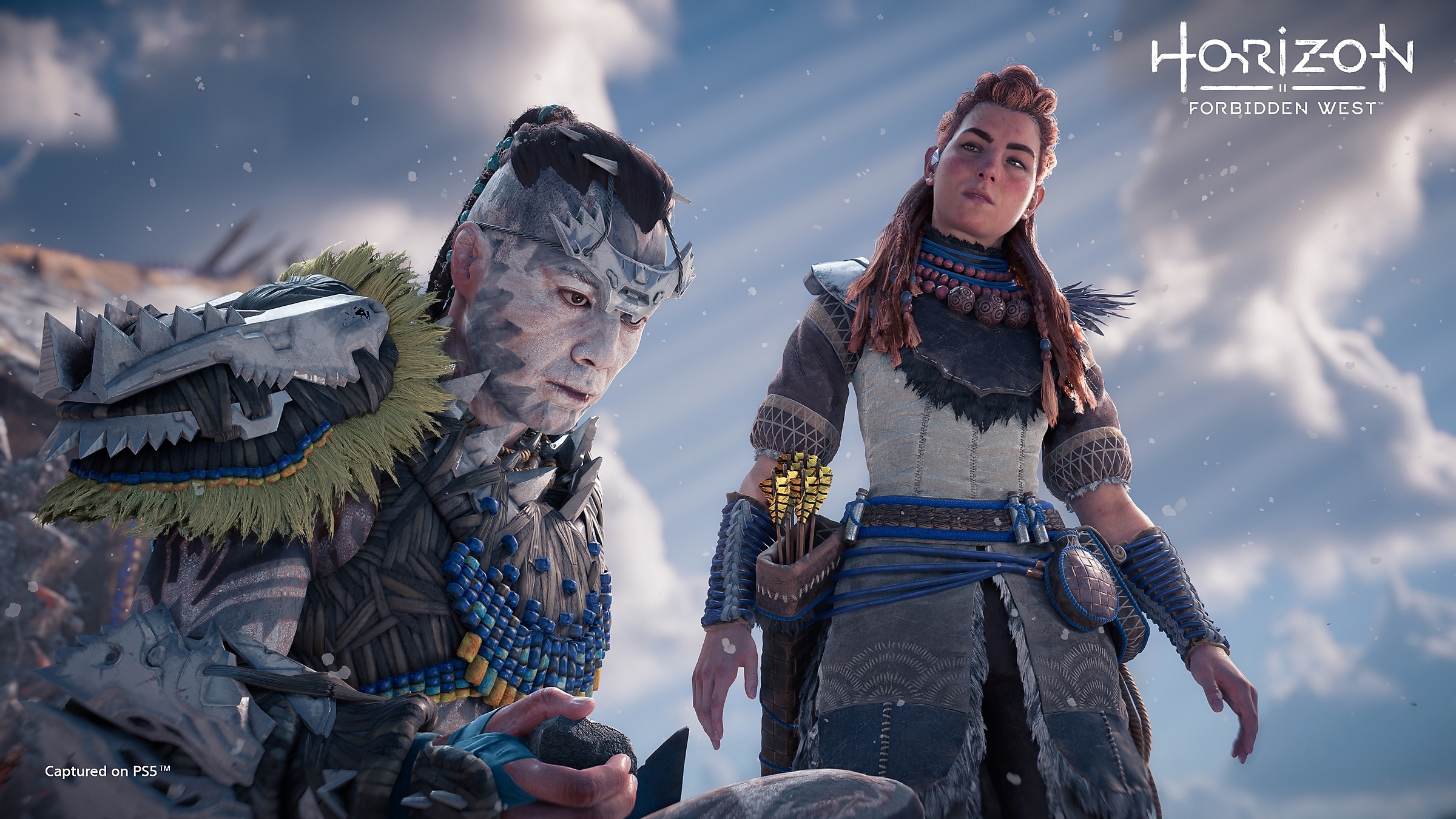
As you progress through Horizon: Forbidden West‘s campaign, you’ll meet various different tribes and explore their settlements. None of them are alike, and each one offers quite a bit, be it side quests, allies, or hidden items. Some settlements also offer melee pits, in which one can challenge different warriors in one-on-one battles. Then, there are hunting grounds, where the player can test his or her mettle against beasts.
Continuing on, certain settlements also offer things like dyers (who can dye your armour a chosen colour), cooks (who make stat boosting dishes from provided ingredients), potion makers, vendors and fans of a strategy board game called Machine Strike. The latter is Horizon‘s take on Gwent, or the board game found in Assassin’s Creed: Valhalla. Simply put, it’s a one-on-one strategy game wherein you use various machine pieces in battle. I tried it once, but it really wasn’t my thing, which was also true of the others.
Some may love it, though.
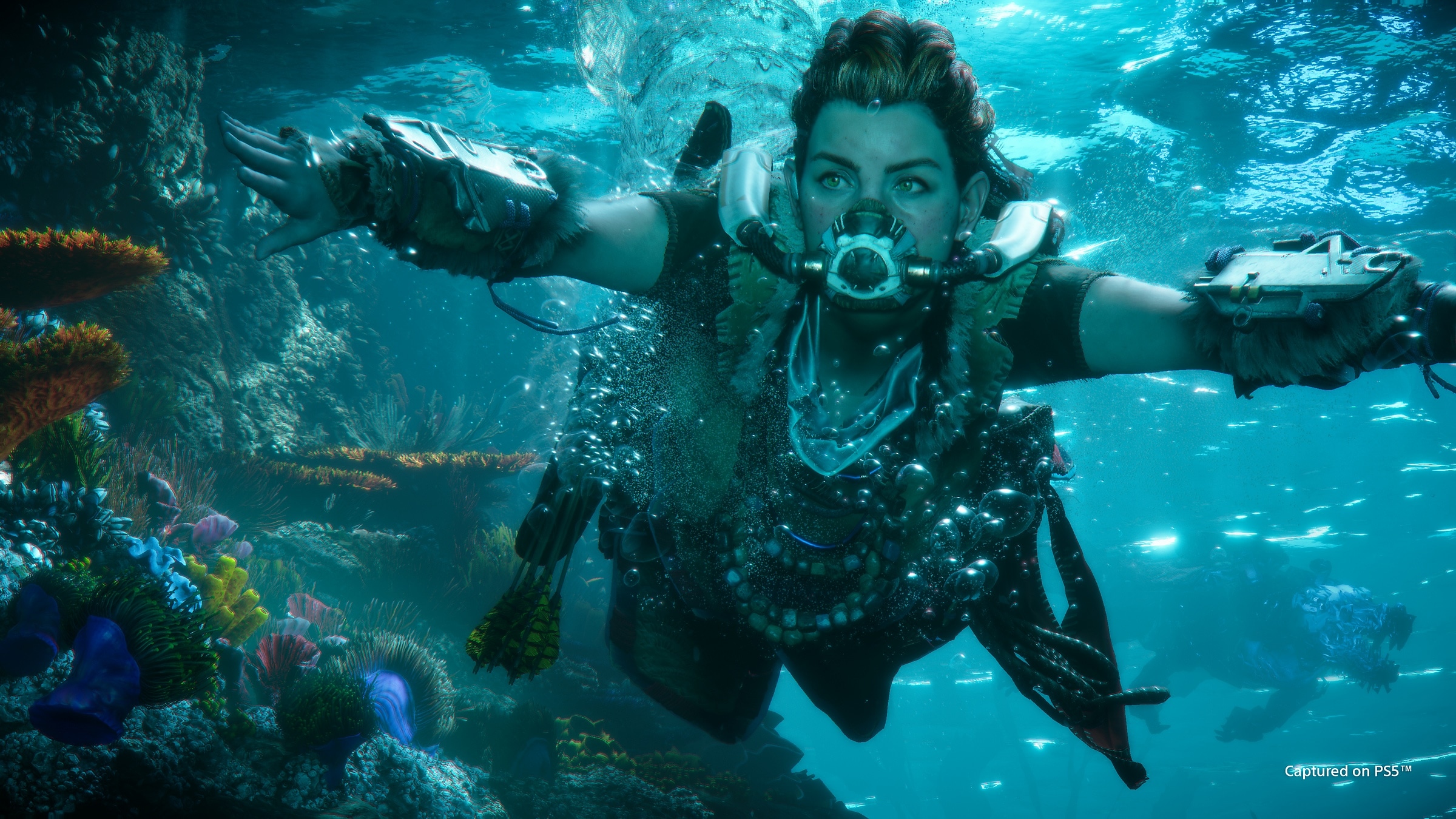
Needless to say, Horizon: Forbidden West is an absolutely gigantic game, which thoroughly blew me away. After putting twenty hours into the game, I thought I’d explored a lot and completed a ton until I zoomed the map out and noticed that most of it was still clouded over. This is a testament to a massive and well crafted map, which holds many secrets to discover.
I was incredibly impressed by how varied many of the environments were. Although the game started in an area that mixed grasses, trees, lakes and rivers with steep rocky cliffs and some sun bleached sand, it opened up to include much more. As you journey through this incredibly immersive campaign, you’ll venture through lush tropical jungles, massive fields, large lakes, dusty and arid desert, and snowy peaks. Everything you can see is also available for exploration and traversal, meaning it’s easy to get lost off the beaten path.
It can take a while to explore the Forbidden West on foot, so it’s nice that Aloy can use her spear to turn machines friendly. This is helpful in battle, but also provides the player with both ground and aerial mounts. Needless to say, they’re nice to have. Just don’t mistake your mount for an enemy and destroy it like I did.
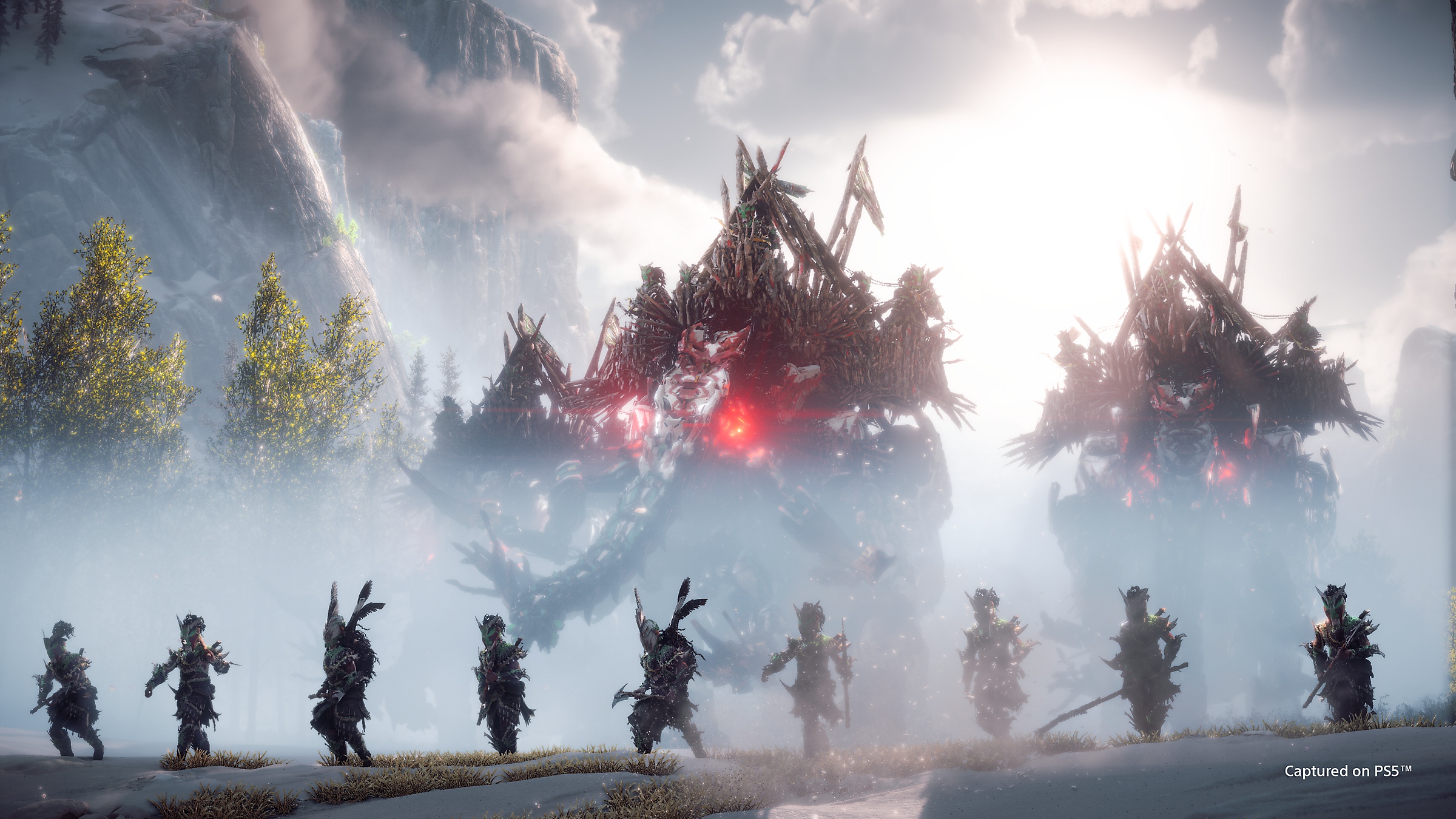
I honestly found myself in awe throughout most of this game, because it’s so beautiful and detailed. There aren’t many that come close to matching it visually, and the small details are really impressive. Being able to swim underwater and see the ruins of both machines and humanity, watching as an enemy’s corpse makes tracks as it moves or slides through the sand or snow, and simply looking at the local flora and fauna react to weather, was all pretty jaw dropping. That doesn’t even touch upon the character models and their incredibly detailed and emotive faces, which are so advanced that they even feature peach fuzz.
The sound is also top notch, thanks to noteworthy design. The world always feels alive (and real), the characters sound and act like actual people, and it’s so easy to get lost in everything that hours just fly by with little having been accomplished. On top of that, most of the dialogue is well written, and every battle — be it big or small — feels epic, thanks to loud and boisterous music and effects.
During my thirty hours with this behemoth, I experienced one incredibly short instance of frame rate slowdown, and wouldn’t have even noticed it if I hadn’t been paying close attention. Outside of that, a few instances where the screen flashed black for a second, and one where Aloy’s eyes rolled into the back of her head, the experience was smooth and impressive.
Lastly, this particular game has more accessibility settings than I’ve ever seen before. It lets you change the length of the weapon wheel’s slowdown effect, adjust what’s shown on the HUD, and also allows you to make loot show up automatically. Furthermore, it’s also possible to make climbable surfaces always glow, turn off tinnitus sounds, and choose whether the game shows you where to go or not. These are just some of the available settings, and it’s all quite impressive.
Simply put, Horizon: Forbidden West is a phenomenal sequel. It builds upon an already large and impressive game, and improves upon it in almost every department. Furthermore, it’s so lengthy, immersive and varied that its cost to value ratio is through the roof.
Don’t sleep on this one if it interests you, because it’s an early Game of the Year contender!
This review is based on the PlayStation 5 version of the game, which we were provided by Sony.

